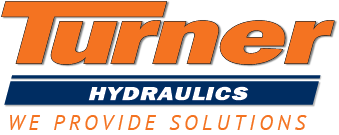Hydraulic Pump Pressure Versus Flow
Pressure and flow are two key concepts related to hydraulic pumps and the systems in which they are used. These two terms and their functions are sometimes, mistakenly, mixed up. An operator might say their high-pressure hydraulic pump is not creating any pressure, so they need to replace it. However, this may not be an accurate assessment of the problem since the pump is responsible for flow.
The pressure in a system is created by the resistance encountered by the flow the pump creates. To better illustrate this, consider the pressure and flow through a garden hose:
- Restricting the flow out of a hose causes back-pressure to propel the water into a long-distance stream.
- Free-flowing water out of the end of the hose may only travel 12″ horizontally or upwards, as there is no back-pressure caused by a restriction to the flow.
If there was a Tee at the hose and only one side was restricted, the water still would not spray very far. Fluid is lazy and always takes the path of least resistance. Both ports of the Tee would need to be restricted or closed, in order to build pressure in the hose, which can be used to spray the water. The same holds true for a hydraulic system, in that hydraulic fluid takes the path of least resistance to get back to the reservoir. The path of least resistance could be into a cylinder to do work, across a relief valve because the load on the cylinder is too great, or across a leak-path of a component that allows pressurized fluid to sneak back to tank while avoiding doing any work. If a valve is allowing fluid to go back to tank without building the appropriate pressure, then the pump will not “build” pressure, but that is not the pumps function in a system. The pump creates flow and is designed to handle that flow rate up to a specified pressure, as the flow becomes restricted.
The resistance exerted by a load initiates pressure in a circuit. Therefore, the difference between hydraulic pump pressure and flow is that the pump delivers a flow rate, and pressure results when that flow encounters resistance. Pressure is a measure of this resistance as a force per unit area. When one mentions the pump’s pressure rating, they’re talking about how much pressure the device is capable of producing and handling.
Each pump has 2 important specification ratings: pressure and flow. Often the pressure is rated in PSI (Pounds per Square Inch) and flow is measured in GPM (Gallons Per Minute). The metric equivalents are Bar and LPM. 1 Bar is equal to 14.5 PSI, and 1 Liter is 0.26 gallons – almost the same as a quart. The flow rating of a pump must be large enough to move all of the actuators at their intended speed and the pressure rating of the pump must be great enough to achieve the actuator forces required to do the work.
Flow and pressure are not independent of each other. A system with low pressure could be due to a pump with low flow, as the flow could be escaping back to the reservoir, much like when a cylinder’s piston seal is bypassing. Understanding how flow influences pressure helps gauge hydraulic pump system performance, select appropriate power sources and motors, and know how to compensate for internal losses due to factors such as flow turbulence, internal leakage, fluid viscosity and friction.

Leave A Comment